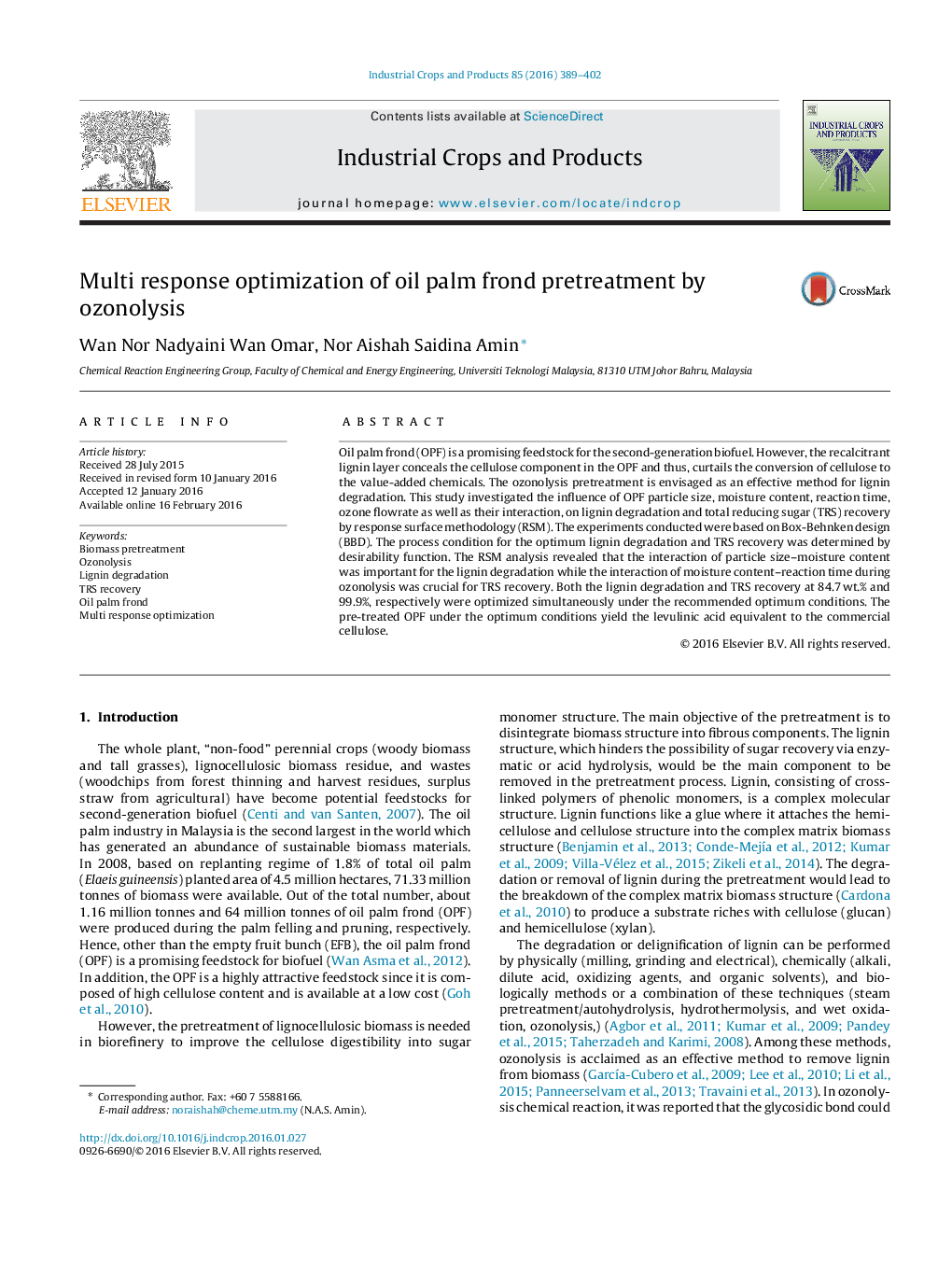| Article ID | Journal | Published Year | Pages | File Type |
|---|---|---|---|---|
| 4512507 | Industrial Crops and Products | 2016 | 14 Pages |
•RSM predicts ozonolysis pretreatment performance on lignin degradation and TRS recovery.•Lignin degradation and TRS recovery were optimized by desirability function.•Particle size of OPF is important for lignin degradation.•Optimum lignin degradation and TRS recovery were 88.9% and 99.9%, respectively.•Ozonolysis effectively degraded lignin in OPF and improved TRS recovery.
Oil palm frond (OPF) is a promising feedstock for the second-generation biofuel. However, the recalcitrant lignin layer conceals the cellulose component in the OPF and thus, curtails the conversion of cellulose to the value-added chemicals. The ozonolysis pretreatment is envisaged as an effective method for lignin degradation. This study investigated the influence of OPF particle size, moisture content, reaction time, ozone flowrate as well as their interaction, on lignin degradation and total reducing sugar (TRS) recovery by response surface methodology (RSM). The experiments conducted were based on Box-Behnken design (BBD). The process condition for the optimum lignin degradation and TRS recovery was determined by desirability function. The RSM analysis revealed that the interaction of particle size–moisture content was important for the lignin degradation while the interaction of moisture content–reaction time during ozonolysis was crucial for TRS recovery. Both the lignin degradation and TRS recovery at 84.7 wt.% and 99.9%, respectively were optimized simultaneously under the recommended optimum conditions. The pre-treated OPF under the optimum conditions yield the levulinic acid equivalent to the commercial cellulose.
Graphical abstractFigure optionsDownload full-size imageDownload as PowerPoint slide
